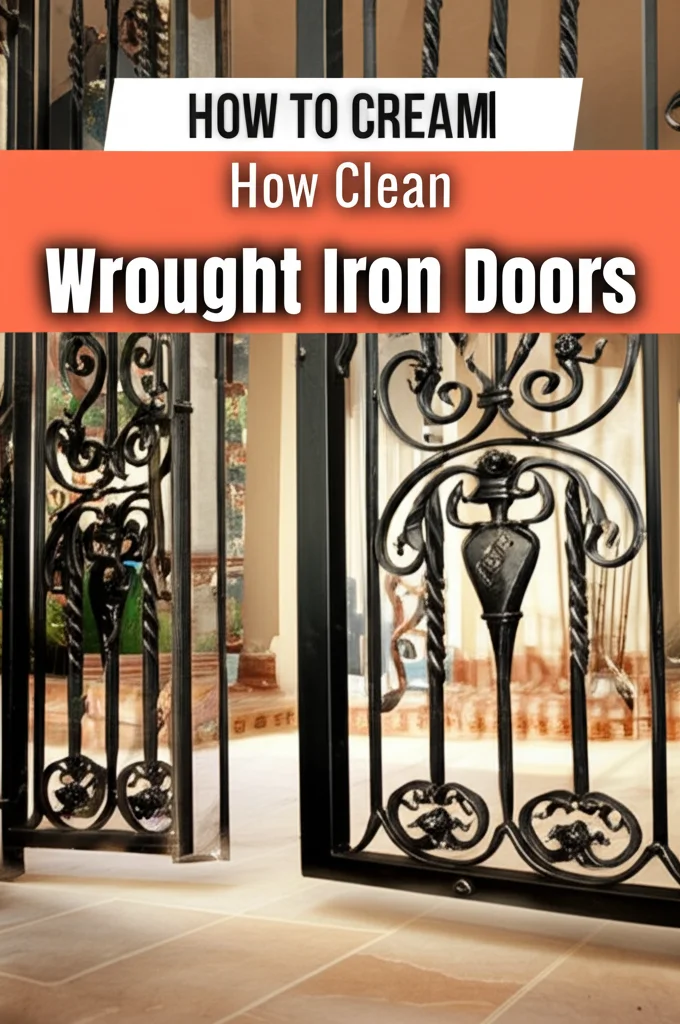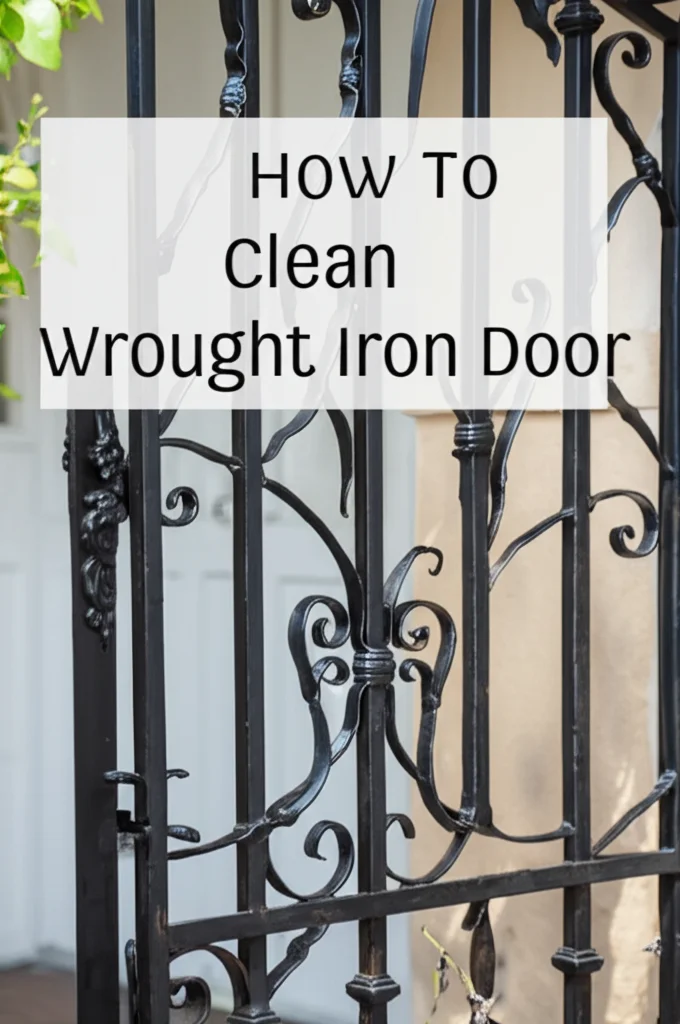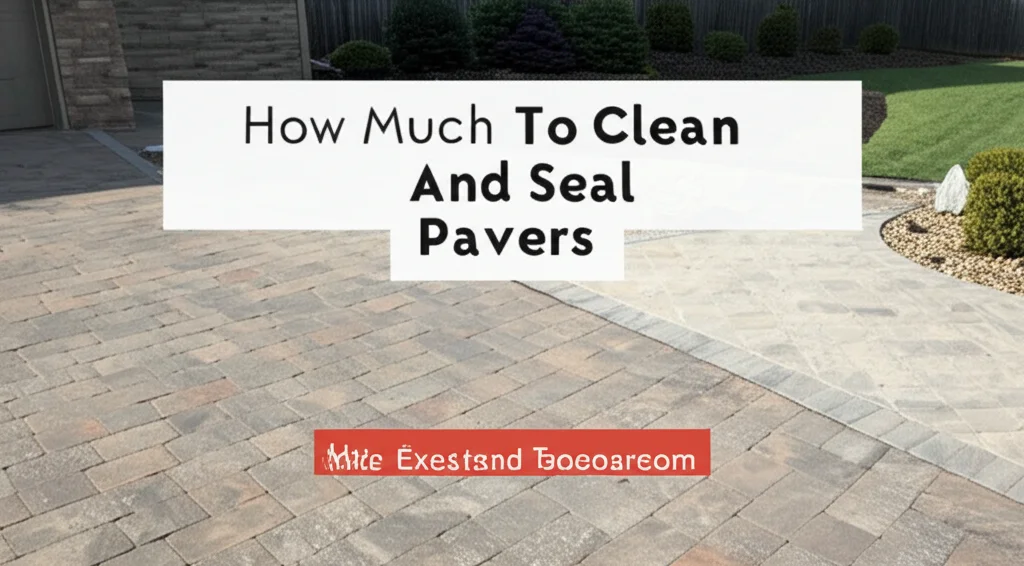· Home Improvement · 7 min read
How To Clean Wrought Iron Doors

Keeping Your Entrance Stunning: How To Clean Wrought Iron Doors
Have you ever admired the elegant look of a wrought iron door, but worried about the upkeep? Wrought iron doors add a touch of sophistication and security to any home, but they do require regular cleaning to maintain their beauty and prevent rust. Cleaning wrought iron isn’t difficult, but knowing the right methods and products is key. This article will guide you through everything you need to know about how to clean wrought iron doors, from routine maintenance to tackling stubborn rust. We’ll cover the best cleaning solutions, tools, and preventative measures to keep your door looking its best for years to come.
Quick Answer: To clean a wrought iron door, gently wash it with warm, soapy water, rinse thoroughly, and dry completely. Apply a protective coating of wax or oil to prevent rust and maintain its shine.
Takeaway:
- Regular cleaning prevents rust.
- Use gentle cleaning solutions.
- Always dry thoroughly after washing.
- Protect with wax or oil.
Understanding Wrought Iron and Its Needs
Wrought iron is an iron alloy known for its strength and malleability. It’s a popular choice for doors because of its durability and classic aesthetic. However, unlike stainless steel, wrought iron is susceptible to rust when exposed to moisture and air. This is why consistent care is so important. Understanding the material helps you choose the right cleaning methods and avoid damaging the finish.
- Rust is the Enemy: Rust weakens the iron and can cause unsightly discoloration.
- Protective Coatings: Many wrought iron doors have a protective coating (paint, powder coat, or sealant) that needs to be maintained.
- Gentle is Best: Harsh chemicals and abrasive cleaners can strip the protective coating and accelerate rust.
Gathering Your Cleaning Supplies
Before you start, gather everything you’ll need to efficiently clean your wrought iron door. Having the right tools on hand will make the process much smoother. You likely already have many of these items around the house!
- Mild Dish Soap: A gentle cleanser that won’t damage the finish.
- Warm Water: Essential for dissolving dirt and grime.
- Soft Cloths or Sponges: Microfiber cloths are ideal as they are non-abrasive.
- Soft-Bristled Brush: For getting into intricate details and removing stubborn dirt. An old toothbrush works well!
- Garden Hose with a Gentle Spray Nozzle: For rinsing.
- Wax or Oil (for protection): Paste wax, linseed oil, or a specialized wrought iron protectant.
- Rust Remover (if needed): Choose a product specifically designed for wrought iron.
- Protective Gloves: To protect your hands.
The Routine Cleaning Process: Keeping Rust at Bay
Regular cleaning is the best way to prevent rust from forming on your wrought iron door. This process should be done at least every few months, or more frequently if you live in a humid climate or near saltwater. A little effort goes a long way in preserving the beauty of your door.
- Dust and Debris Removal: Begin by removing loose dirt and debris with a soft brush or cloth. This prevents scratching during the washing process.
- Wash with Soapy Water: Mix a small amount of mild dish soap with warm water. Dip a soft cloth or sponge into the solution and gently wash the entire door surface.
- Rinse Thoroughly: Use a garden hose with a gentle spray nozzle to rinse away all the soap residue. Ensure no soap remains, as it can attract dirt.
- Dry Completely: This is crucial. Use a clean, dry cloth to thoroughly dry the entire door. Moisture is the primary cause of rust. Pay attention to crevices and decorative elements.
Tackling Rust: Restoration and Prevention
If you notice rust forming on your wrought iron door, don’t panic! It can be removed, but it requires a bit more effort. Addressing rust promptly prevents it from spreading and causing further damage.
Removing Light Rust
For minor surface rust, you can often use a combination of vinegar and baking soda.
- Vinegar Soak: Apply white vinegar to the rusted areas and let it sit for 30 minutes to an hour. Vinegar’s acidity helps loosen the rust.
- Baking Soda Paste: Make a paste of baking soda and water. Apply the paste to the rusted areas and scrub gently with a soft-bristled brush.
- Rinse and Dry: Rinse thoroughly with water and dry completely.
Removing Stubborn Rust
For more significant rust, you may need to use a commercial rust remover specifically designed for wrought iron. Always follow the manufacturer’s instructions carefully.
- Apply Rust Remover: Apply the rust remover to the affected areas.
- Scrub and Rinse: Allow the remover to sit for the recommended time, then scrub with a soft-bristled brush and rinse thoroughly.
- Neutralize (if required): Some rust removers require neutralization after use. Check the product instructions.
- Dry Completely: Again, drying is essential.
Protecting Your Door: Waxing and Oiling
Once your wrought iron door is clean and dry, it’s time to protect it from future rust and maintain its shine. Applying a protective coating creates a barrier against moisture and helps prevent corrosion.
- Paste Wax: Paste wax provides a durable, long-lasting protective layer. Apply a thin coat of paste wax with a soft cloth, let it dry, and then buff to a shine.
- Linseed Oil: Linseed oil penetrates the iron and provides a natural protective coating. Apply a thin coat of linseed oil with a cloth and allow it to soak in. Wipe off any excess oil.
- Specialized Wrought Iron Protectant: These products are specifically formulated to protect wrought iron from rust and corrosion. Follow the manufacturer’s instructions for application. You can find these at most hardware stores.
Maintaining the Finish: Paint and Powder Coating
If your wrought iron door is painted or powder-coated, maintaining the finish is crucial for protection. Chips and scratches can expose the iron to moisture and lead to rust.
- Inspect Regularly: Check for chips, scratches, or areas where the paint or coating is wearing thin.
- Touch-Up Paint: Use a matching paint color to touch up any damaged areas.
- Powder Coating Repair: For significant damage to powder coating, you may need to have it professionally re-powder coated. This is a more durable finish than paint.
- Avoid Abrasive Cleaners: Never use abrasive cleaners on painted or powder-coated surfaces, as they can scratch the finish. You can learn more about protecting your floors from damage by checking out https://www.beacleaner.com/how-can-you-use-a-carpet-cleaner-on-hardwood-floor/.
Frequently Asked Questions (FAQs)
Q: How often should I clean my wrought iron door? A: At least every few months, or more often if you live in a humid climate. Regular cleaning prevents rust buildup and keeps your door looking its best.
Q: Can I use bleach to clean my wrought iron door? A: No, bleach is too harsh and can damage the finish and accelerate rust. Always use mild dish soap and water.
Q: What’s the best way to prevent rust on my wrought iron door? A: Thoroughly dry the door after cleaning and apply a protective coating of wax or oil. Regular maintenance is key.
Q: My door has intricate details. How do I clean those? A: Use a soft-bristled brush, like an old toothbrush, to gently clean the intricate details. This will help remove dirt and grime without damaging the ironwork.
Q: Can I use a pressure washer to clean my wrought iron door? A: Avoid using a pressure washer, as it can damage the finish and force water into crevices, leading to rust. A gentle spray from a garden hose is sufficient.
Protecting Your Investment: Long-Term Care
Cleaning your wrought iron door isn’t just about aesthetics; it’s about protecting your investment. By following these simple steps, you can keep your door looking beautiful and functioning properly for years to come. Remember, consistent maintenance is the key to preventing rust and preserving the elegance of your wrought iron entrance. Don’t forget to also consider the cleanliness of your floors, as a well-maintained entrance starts from the ground up. You might find helpful tips on maintaining various floor types at https://www.beacleaner.com/how-to-clean-vinyl-plank-flooring/. A clean door and a clean floor create a welcoming and impressive first impression!




